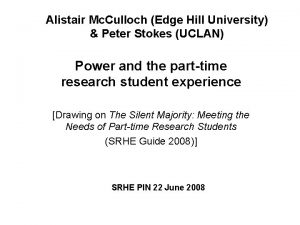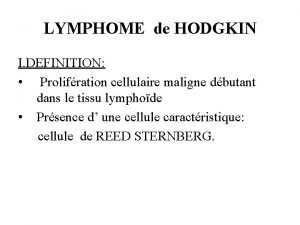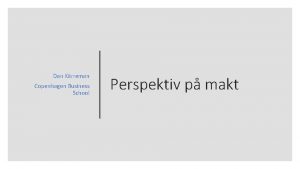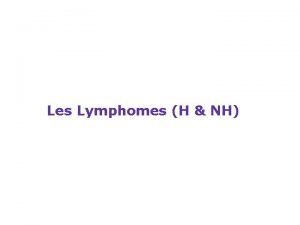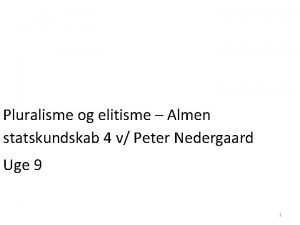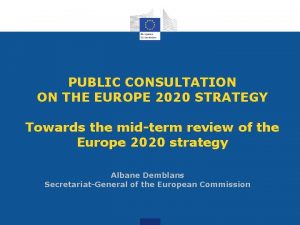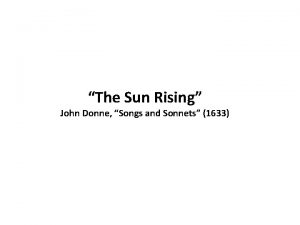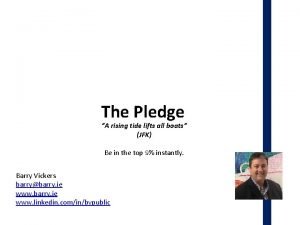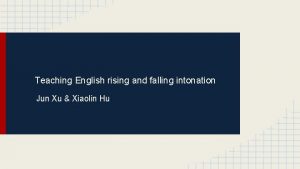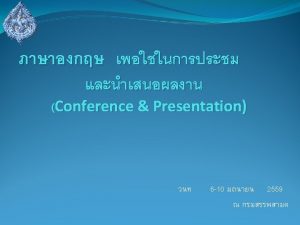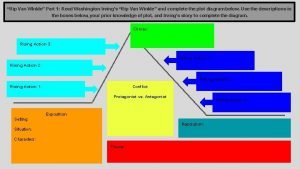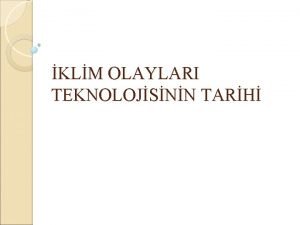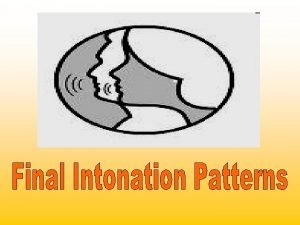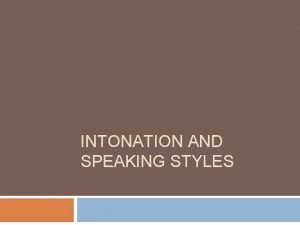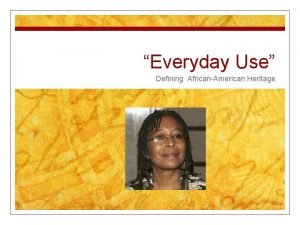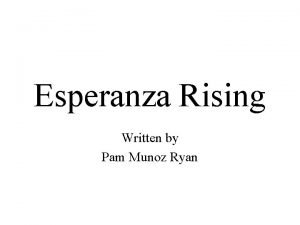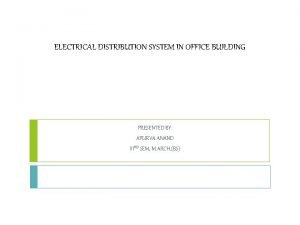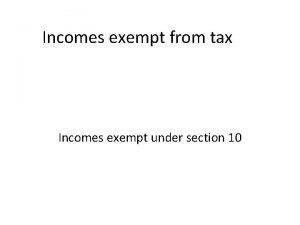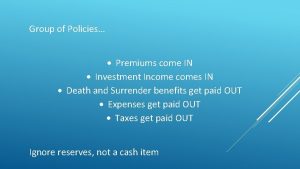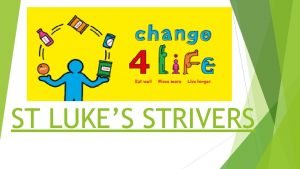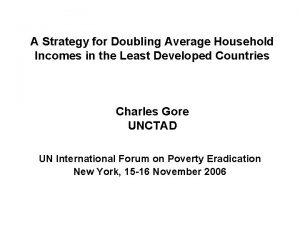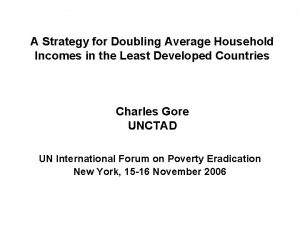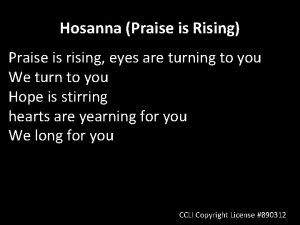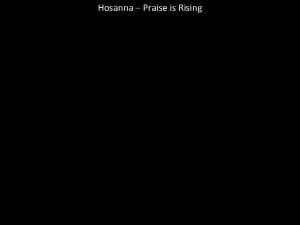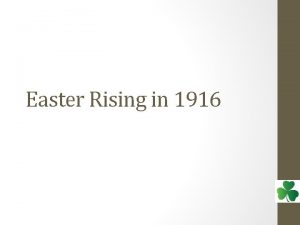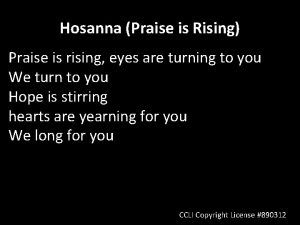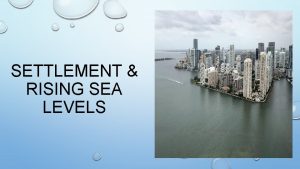St Lukes Strategy 2020 Rising Premiums Outpace Incomes






















































- Slides: 54

St. Luke’s Strategy 2020

Rising Premiums Outpace Incomes 20% 17% of Income 15% Premiums Growth 10% 5% Per Capita Income 0% 2012 2013 2014 2015 2016 2017

…and Deductibles are Unaffordable % Households Where Total Liquid Financial Assets > Health Insurance Deductibles For 40% - 50% of Idaho households, standard annual deductibles represent more than all of their liquid assets.

Population Health We are accountable for … The healthcare outcomes and costs of caring for a defined population of people.

Strategy 2020

Community Health We are responsible. . . To contribute to the health of the communities we serve, in partnership with many others. St. Luke’s does not. . . Have the resources or expertise to take accountability for a community’s health.

Community Health Mission To be a trusted community partner in identifying, convening, promoting and/or deploying efficient and effective community health initiatives within the Magic Valley and surrounding communities.

Our Collaborative Framework Foundation Building Gap Analysis Prioritizing & Deploying Assessment & Monitoring Partner Collective Impact Evidence Based & Evidence Informed

Community Health Needs Assessment Improve the Prevention & Management of Obesity & Diabetes Improve Mental Health & Reduce Suicide Improve Access to Affordable Health Insurance

Questions

Welcome to the Patient Financial Navigator Foundation, Inc. PFNF Education 2017 11

A Community Outreach Program � The Patient Financial Navigator Foundation, Inc with its home base in Twin Falls, Idaho, is thrilled to present free educational programs for patients to attack the hassle factor in healthcare…thru education. � Day Egusquiza, President, with over 37 years’ experience in healthcare including 20 years at an Idaho hospital, will guide the Patient Financial Navigator Foundation which will create a pathway for patients with multiple educational efforts – thru employers, payers, boot camps– while developing networks including a Resource Library with local hospitals to help navigate thru the maze called healthcare. Transforming healthcare one patient at a time. An advocate for all! � NO cost to the Employer for any employer programs. � NO cost to the community for any community programs. � NO cost to the community for the Boot camps 12

The Patient Challenges with Health. Care • No one ‘asks’ to come to a hospital. • Patient’s lives are impacted – they are scared, they feel out of control, they are lost with the overwhelming factors of cost/unknown, multiple providers, and continuing frustration with ‘who knows all of this? ” • Patients are unaware of the many changes with their insurance, government programs, employer’s coverage and all the ‘rules’ associated with getting services paid. • Patients historically access hospitals once a year or less. Healthcare is very personal! 13

But Patients Don’t Speak the Language of Health Insurance Today… 14

…and They May Not Identify with the Language of Value-Based Care Tomorrow We say… Consumers said… Medical home “It sounds just like a nursing home. ” “First you go to the medical home, then you go to the funeral home. ” Integrated care “It sounds like a sales pitch in a cheap brochure. ” Accountable “It’s kind of scary. I am going to go there and something bad is going to happen and someone has to be held accountable for it. ” Value “It means things are cost effective. They are going to keep the value down. You aren’t getting the best care. ” Source: M. Ross, T. Igus, and S. Gomez, “From Our Lips to Whose Ears? Consumer Reaction to Our Current Health Care Dialect. ” The Permanente Journal. Winter 2009, Vol. 13, No. 1. http: //www. thepermanentejournal. org/files/Winter 2009/dialect. pdf 15

Additional ‘factors’ influencing the patient experience= confused=hassle factor � Electronic medical record /EHR – incentive and penalties � Integrated systems between providers/doctors and hospitals but safety with data sharing a concern. *Ransomware* � Quality reporting systems –with rewards and penalties � Insurance plans who ‘control approval’ for physician-directed care. � Alternative payment systems for hospitals, doctors, long term care, DME , home health – all in the midst of rolling out with the goal of increased quality, reduced costs and more engaged patients. New terms from the healthcare providers: Population health Quality over quantity Patient Centered Care Quest for Quality 16

IMPROVE THE EXPERIENCE Take the Hassle Out of the Experience Hassle Map: Elective Surgery for an Insured Patients- who knows to do this? Get a referral to a surgeon Find out if the surgeon, anesthesiologist, pathologist, and radiologist are in your network Find out if the hospital is in your network Call to get a preauthorization from your health plan (or realize later that you forgot) Worry about whether you will have to pay anything in advance, and if so, how much Figure out where your out -of-pocket costs for preop tests will be lowest (or don’t think about this until you get the bill) Have the surgery Find out how much the operation will cost you out-of-pocket (or hold your breath until the bill comes) map construct developed by Slywotzky (2011). Spend a month dreading getting the final bill in the mail Source: Based on the hassle 17

Healthcare is personal. Healthcare is local… but… PFNF Education 2017 Healthcare can be complex and too complicated WHY? Every insurance has their own rules for coverage. WHY? Physician directed care may not be insurance approved. WHY? Frustration in ‘thinking there is coverage in my plan’ only to be denied as ‘not medically necessary. ’ WHY? Itemized statements from providers are confusing WHY? Changing employer plans are adding new items – like Health Savings Accounts –with limited understanding by the employers. +++++++ Charges and actual payment do not align. 18

Why create the Patient Financial Navigator Foundation, Inc? No one really understands their healthcare insurance until they need it. No one realizes the ‘next steps’ once the medical incident has occurred/been ordered. When a family is in a healthcare crisis, their life is disrupted, scared and vulnerable - coordination/communication is required to reduce the hassle factor. THE FOUNDATION IS AN INNOVATION LAB – finding new ways to transform today’s chaos. PFNF Education 2017 19

What is the PFNF, Inc A not-for-profit Foundation with the focus on transforming the hassle factor …thru Education. Answers: What happens now—beyond the clinical care? Three legs of the Foundation’s Outreach Mission: Community Outreach – Boot Camps Employer Outreach – Lunch and Learn for employees Navigator Resource Library- personal pt/family As significant healthcare changes occur along with ongoing ‘Healthcare buzz’ updates in local newspaper. PFNF Education 2017 20

Three components of this dynamic program. A community outreach program • Employer program • Build historical info • Lunch & Learn-onsite education with employers • Health. Care Buzz • EOB – how to read • New healthcare changesnational and local • Q&A –as requested by the site • Community programs • Networking with existing services • Creating unique trainings • Identify community healthcare legislative changes -educate • Turning 65 Bootcamp • National ‘new terms: HSA, ACO, Quality based, Managed, Medicare, etc. • Health. Care Buzz • Navigator Resource library * located at local hospital • Employer specific guides • Medicare & ME • Traditional vs Mgd • Translating ‘ease’ • What to expect when? ? • General Education • How to appeal? • Networking with existing services 21

1 st) Example of Community Outreach Education – Boot Camps 1) 2) 3) 4) 5) Identify community leaders to participate in the boot camp trainings Identify thru existing community services, additional healthcare related ‘hassle factor’ training. Provide education to high schools, colleges, regional and others as requested. Join with existing educational groups to add the financial ‘translation’ for ease of understanding ‘what happens now. ” Innovation lab – creating community specific ed. 22

2018 Projected Community Outreach Education BEGIN OUTREACH TO HIGH SCHOOL SENIORS AND COLLEGE STUDENTS/MEDICAL FIELD Dec-ish/2017 & College Begin outreach to area High Schools “Insurance 101” - taught to seniors & college students to prepare them to become young, informed adults May 19, 2018 Community Boot camp – “The Language of Insurance” Tying to the Sr education, national focus, local /state changes CONTINUE 2 X A YEAR MEDICARE FOCUSED BOOT CAMPS PFNF Education 2017 Feb 2, 2018 Community Boot Camp- “Medicare 101, Social Security Administration, and Assistance for Seniors. ” ++ “Turning 65” 23

Trusted Health. Care Educator Participate: Office on Aging events Wellness Fairs **Oct 7 th, CSI** Population Health dialogue/changes = ‘translator’ New transformations in healthcare Employer work place insurance initiatives Next generation of healthcare –with partners School outreach – high school, colleges Professional associations As requested 24

2 nd) Example of Employer. Specific “Lunch & Learn” 1. Meet with the HR staff to learn about the employer’s insurance plan. 2. Outline the key elements for education to be covered during the 30 min employee ‘Lunch and Learn. ’ 3. Hot spots for education (usually): EOB education, out of network, what happens when you are scheduled for a surgery and ‘Health. Care Buzz’ ++ Q&A. 4. Innovation lab – taking the education to the employer. 25

So now you need healthcare – Outpt surgery (Sample) – in network � Surgeon’s office will contact your insurance carrier to get the surgery preauthorized. Insurance carrier has their own criteria for medically necessary services. Many times requires ‘negotiation’ with provider and payer. � Routine bills for an outpt surgery- usually each sent separately: Surgeon Pre-op testing ctr) Anesthesiologist Procedure location (Hospital, free standing IMPORTANT: Validate all of the above are within the network that is part of Cigna’s plan. IN NETWORK 26

27

28

PFNF Education 2017 29

Think like a pt – out of network (means what to the pt or family? ) • • • 40 year old has had emergency foot /ankle surgery approx 8 years ago and taken to a Boise hospital. The surgeon specialized in this type of foot surgery. Both in network at that time. 3 surgeries later –still problems with rebuilding the foot to allow the pt to walk. July 2013, employer changes plans and now the doctor and hospital who employees the doctor is out of network. The pt continues to go to the surgeon who does another surgery Oct 2014 and a follow up minor surgery in 2015. Pt was aware of the change but did not know to do anything different as he was in continuing care. Insurance pays significantly lower – no adjustment from charges as out of network/no contract. Pt pays all charges except actual payment to doctors, hospitals, tests. Huge financial hit. What does the employee or pt know of the a) ramifications of out of network, b) prior notice to get approved and c) appeal rights? 30

Let’s look at out of network. Surgery done at out of network hospital • Surgery done at an out of network hospital. • Billed charges: $8000 • Out of network deductible applied: $2000 individual • Hospital bills Cigna; Cigna pays ‘reasonable amt’ that would be paid to IN network providers. • Amt eligible for payment from Cigna: $4400 • LESS $2000 out of network deductible • LESS 50% out of network coinsurance after deductible: $2400 x 50% = $1200 • TOTAL AMT PD BY CIGNA: • $4400 -$2000 ded- $1200 coins = $1200 paid to out of network provider/hospital. � But the hospital is NOT contracted. Therefore, the hospital accepted the $4400 but left due on the account for the pt to pay: $8000 – $1200 = $6800 from pt. **Out of network deductible: $2000 (Separate from any in network deductible) **PLUS 50% copayment: $1200 **PLUS balance billing due to no contract: $8000 - $4400 =$3600 TOTAL DUE FROM PT: $6800 31

Examples from actual employer “Lunch and Learn” PFNF Education 2017 Denials Family member situations EX) Colonoscopy is part of the wellness package from the insurance. However, if anesthesia was used-which is very common - there is inconsistency with coverage. EX) Mother is in CA and part of Medicare Gold. (A Part C/Medicare Advantage program= separate from traditional Medicare. ) She had an unfortunate health situation, made worse by mis-information from the Medicare Advantage plan. Readmitted with deteriorating health. EX) College students Denied conscious sedation for 1 employee, approved it for another. Employee handbook does not speak to ‘anesthesia. ’ 32

Employer Insurance Costs/Changes Healthcare spending 2015 -16 � Spending averaged $5141 per individual. � Average Health Savings Account balance for 2015 = $1844 (Can have up to $3400/single; $6750/family) � Out of pocket rose 3% to aver $813 � Average contribution by individuals � Prescription drugs increased 3. 5 -9% � Average employer contributions per capita � Women of all ages spent $236 more out of pocket than men. � $649 per capita was spent on brand prescriptions. � The price of an ER visit jumped 10. 5% to an aver of $1, 863 � Employers contribute about 73% toward the monthly premium for individuals. 38% for dependents. *MCOL 3 -17 = $1864 =$948 � Average high deductible plan: $2600 -13, 100 /family; $1300 -6550 /single � Benefit: Amt deferred for tax impact. � Con: Family would have to pay premiums, deductible $, coinsurance $ AND have enough left to put money in the HSA. 33

Ongoing Education – thru “Health. Care Buzz” articles Times News /local bi-monthly educational articles All articles are available on our webpage: What does out of network look like? What is a portal and why do I care? Turning 65: Initial wellness visit Turning 65: How does a Medicare inpt actually pay? Turning 65: What is a Medicare Supplemental Insurance plan? Turning 65: What are the Medicare options? ** Turning 65: When is Medicare a 2 nd payer? ** Leading to : Oct 28 th - “Turning 65 Boot Camp” PFNF Education 2017 34

More updates – Healthcare Buzz ‘Roughly 95 M working Americans under age 65, along with 5. 2 M of their family members gained health insurance coverage from 20102015 under the ACA. They represent 77% of all of these who gained coverage in first 6 yrs. ” Robert Wood Johnson/8 -17 9. 2% of adults were covered by Medicaid. 43. 8% of adults were insured thru an employer. 3. 5 M more Hispanic adults had health insurance in 2015 vs 2013. 2 M more black adults had health insurance 2015 vs 2013. The uninsured rate for 2 nd Q 2017 was 14. 2%. Well Being Index. PFNF Education 2017 35

Health Care Buzz (Ex) 55% of Americans are paying more than last year for insurance. � 1 of 4 Americans health worsened after delaying care because of cost concerns � 30% said their health insurance coverage has gotten worse in the past year. � 1 in 4 lost access to their doctors last year due to insurance networks. (out of network huge costs!!) � 3 in 10 delayed emergency care in the last year out of fear of costs Daily. Factoid / MCOL 10 -16 Morning consult PFNF Education 2017 Biggest changes Doctor’s expect to result from Millennial patient habits in coming years. � Increased use of telemedicine (28%) � Proliferation of walk-in clinic settings (27%) � Growth in online scheduling and extended hrs (24%) � Greater transparency for out of pocket costs (11%) � Easily portable electronic health records (10%) Sprocket Rocket 12 -6 -16 “Millennial patients challenging status quo, over 2900 US doctors say. ” 36

Included in Every Event/Training“Health. Care Buzz” Factoid: Health Exec Mobile Mon, March 27, 2017 “Although only 4% of all doctors are emergency physicians, they provide care for: 28% of all acute care visits 50% of all Medicaid and CHIP (children) visits 67% of all acute care to the uninsured patients. • Healthcare Bulletin. The Slate Group. March 30, 2017 “An annual health survey conducted by states and Medicare/CMS found that the full ACA reduced the uninsured rate by 44% while also reducing the number of people without a primary care doctor by 12% and those not having an annual check up by 10%. ” • 37

Humana’s – Bold Goals program Major % of market is Seniors- Part C Medicare* (HEALTHCARE BUZZ EX) 65% of Seniors have multiple chronic conditions 1/3 have diabetes 1/4 have mental health 10% live below the poverty level 6 doctor visits yearly 27 prescriptions yearly High cost to the healthcare system for ‘navigating thru’ alone. Social-economic issues. EX) Depressed? Not taking chronic meds. EX) Can’t afford meds = ED is next. (Medicaid? ) *Population Health Colloquium. March 27, 2017 Philadelphia PFNF Education 2017 38

Employment “Norms” in Huge Flux AARP & MIT Agelab (Population Health 3/17) By 2020: 1 in 5 students will be 35 yrs or older. By 2020: 10, 000 will be turning 65 every day By 2020: 1 out of every 5 adults will be over 65; more than under 5 yrs. 57 year old's are the primary owner of IPad. 50% of over 60 year old's use the internet Over 50 years of age = 1/3 of the work force. Family Care Giver: 42 M adults , age 45 -64, providing care for older family/parents. 17%/ 24 M are providing in addition to their ‘day job. ’ Health. Exec. Mobile -Multiples � 18. 4% of US adults had a mental illness in the past year. � 8. 6% reported substance abuse/dependence in the past year � Almost 40% had at least one chronic medical condition during their lifetimes � 1. 2% had all three conditions: mental illness, substance abuse/dependence and at least one chronic medical condition. Multi-generations in the work force. Norm: 3 -4 generations. (BB and Millennials = both approach ‘work’ differently. ) Surpass BB by 2028 � Millennials 18 -24 75. 4 M – HAVE surpassed BB AND more than 50% of Americans now have at least ONE chronic health condition, mental disorder or substance use issue. (Taylor & Francis group news – “Psychology, Health, and Medicine” Oct 2016. ) Employees/Pts look different – ages (317) � Baby Boomers 51 -69 74. 9 M � Generation X 35 -50 74. 2 M – to 39

Plus more working past 65… “More Americans age 65 & over are still punching the clock and the last time the percentage was this high was when John F Kennedy was in the White House, 1962. “ “Last month, 19% of Americans age 65 and over were still working, according to government data released Fri. That’s the highest rate since, 1962 and it caps a long trend higher since the figure bottomed out at 10% in 1985. ” Why? Some work to feel engaged. Others do not have enough money to retire. Employee Benefit Institute survey: Nearly 1/3 of all workers with less then $10, 000 in savings will work until 70. *Associated Press 5 -7 -17 Medicare Secondary Payer Older workers care giving for other adults PS By 2020 – 10, 000 people will be turning 65 daily! WOW! PFNF Education 2017 40

3 rd) Examples from the Hospital Navigator Resource Library 1) 2) 3) 4) 5) 6) Thru employer specific meetings, build data base of insurance plans, how to read the EOB, deductibles, etc. 1 on 1 intervention with the patient/family – complete work paper Create glossary of terms Create reference guide for additional community resources Create networking ‘handoffs’ with existing hospital team payment options, social work, estimates, patient experience, physician offices, others Innovation Lab: After Hours Q&A – Weds 5: 00 -6: 00 p. m. ; using patient portal; tracking and trending improvements/feedback; integration with medical community; face to face and automation. 41

Think like the family who is scared with a new ER visit w/insurance, employer specific— WHAT HAPPENS NEXT! • Daughter has just been admitted thru the ER. (Inpt vs obs means what to the pt? ) • Parents are scared and distraught about the health of their daughter with the unplanned ‘admit. ’ • As comforting as the care givers are, the financial questions loom large. What happens now? • Who has insurance? What was done with the insurance? What is my coverage? “I have never had to use it before, so I don’t know anything! “ • Think Pt Financial Navigator Program referral 42

Think like a patient – Medicare Part C/Managed Care – comes to the ER WHAT HAPPENS NEXT? � 86 year old with Humana. What is done in the ER to inform the pt this is not traditional Medicare? � If the pt is ‘admitting/obs or inpt” – what happens so the pt understands the difference between Traditional Medicare and Part C/Mgd Medicare? � Now they are in a bed, what happens so the 86 year old understands their out of pocket, what coverage there is with Humana that may be different than Traditional, is this obs or inpt? Who has this information for our sick, confused Sr who does not have anyone to ask? � Care givers/family – who do they ask about the above? � Think Pt Financial Navigator Program referral 43

Sept 2017 “Medicare for all” – Bernie Sanders Elements: All citizens are covered thru tax program No premiums Healthcare is a right, not a privilege Repeal and Replace ACA – Still unresolved in DC 44

17 million Americans have at least 1 chronic disease. 86% of healthcare spending in the US goes to treat chronic diseases. Outpt depression cases rose from 3, 578, 847 in 2013 to 4, 045, 879 Managed Care Digest June 2017 6. 3 million with Pre-Existing Conditions could face higher premiums. 25% of adult enrollees in the 2015 individual market had a pre-existing condition. Kaiser Family Foundation ***Essential benefits *** part of the ACA require all plans to offer essential benefits – mental health, maternity, and protect against pre-existing exclusions or massive rate increases. ***Senate proposed plan**** No required coverage for employers or individuals…no essential benefit requirements 45

� A Kaiser Family Foundation analysis of insurer rate filings and news report found that, in 2017 – 8. 7 million people (84% of all marketplace enrollees) received tax credits to cover a share of their premiums and 5. 9 m (57% of all enrollees) received cost sharing reductions. It also shows that 38 counties and 25, 133 enrollees risk having NO insurer in the marketplace in 2018. � Exchange premiums increased 105% from 2013 -17. The average 2013 monthly premium in 39 states was $232. 62% of those same states saw premiums double in 2017. Lowest premium: NJ $12%. Highest : AL at 222% All states have at least 1 insurance carrier offering coverage thru the Exchange/Open Market. 2017 CLARIFICATION: Currently, market place is used for individual coverage, small employers’ employees/less 50 employees, early retirees/prior to 65 /Medicare. . 46

Medicaid covered 45% of children in Rural areas 2015. 38% in metropolitan areas. Uninsured children declined in rural areas in 43 of 46 states. National rate fell 3%. 30 states expanded Medicaid provides coverage to more than 4. 6 M low-income SENIORS, nearly all of whom are also enrolled in Medicare. (MM) Provides 3. 7 M people with disabilities who are enrolled in Medicare. (MM) Different programs for low income Srs – but it is income based. EX) Qualified Medicare Beneficary/QMB $1025/individual $1374 couple. Medicaid. gov 47

Allows children to stay on plan until 26 No change State and Federal share costs of providing healthcare to low income children & adults ; disabled children and adults; with expansion – income based Complex formula for funding with focus moving to States to fund and oversee. - MEDICAID Protection from massive rate increase for pre-existing or no coverage. Break in service or change of jobs = risk for pre-existing exclusion or premiums Older Americans – 3 x higher premiums than younger 5 x higher premiums Tax set up to pay the insurance companies for their reduction in premiums/subsidizing No mechanism to pay for these ACA/Obamacare American Healthcare Act/Trumpcare 48

Tax penalty for no health insurance. Essential benefits have to be offered in ALL plans No lifetime or annual limits on coverage Cannot charge women more than men for same health plan. Planned Parenthood federal funding for family planning, cancer screening, STD testing, contraception. NO federal funds for abortion. Tax medical devices & insurance companies = new customers. No penalty; no requirement to have insurance. But if no continuous coverage, have to wait 6 mons before purchasing. Scale back on conditions that insurance has to cover. Insurers could now reimpose annual and lifetime limits on some coverage. Same – but insurers can waive maternity and contraceptives Nearly 80% of PP patients have incomes at or below 150% of poverty level. **TOTALLY DEFUND PP. ** Medical device makers, insurance companies and wealthy Americans would receive a BIG tax-cut as no taxes on Insurance companies or Medical devices… 49

Sent a strongly worded letter expressing opposition to a GOP controversial conservative repeal plan to ACA. Warned that the provision by Sen Cruz would mean ‘premiums would sky rock for people with pre-existing conditions’ and ‘millions of more individuals will become uninsured. ’ Conservatives argue this move will allow younger, healthier people to buy cheaper plans. Warns that sicker people would remain in the more expensive, more generous ACA plans – leading to premium SPIKES for pre-existing conditions. SKINNY PLANS = only cover wellness. No doctor visits, hospital care, etc. with very low premiums accompanied by a five-figure deductible. Thus, junk insurance. The Hill & NY Times 50

Small employers – under 50 employees up to 200 … Census Bureau’s statistics of US Business 2012 Employer firms with fewer than 500 workers employed 48. 5% of private sector payrolls in 2011 And Employer firms with fewer than 100 workers employed 34. 4% of private sector payrolls And Employer firms with less than 20 workers employed 17. 5% of private sector payrolls. “American Business is Overwhelming Small Business” 2012 Census Bureau PFNF Education 2017 5. 73 M employer firms in the US firms with fewer than 500 workers accounted for 99. 7% of those businesses And businesses with less than 20 workers made up 89%. Add in the number of non-employer businesses – there are 23 M in 2013 – then the share of businesses with less than 20 workers increase to 97. 9% 51

Making it real – Small Employer Premium “Hits” Small employer in Idaho Premiums have had 23 -25% increase each year/3 years. Currently for 2 employees: *Exchange was not cheaper/similar* $1200 monthly premiums High deductible person: $7000 70/30 coinsurance “Age “ rated … 60 year old Annual $14, 400 in premiums !! UNSUSTAINABLE This was before the new GOP plan for up to 5 x higher than younger premiums. It is capped at 3 x under ACA. PFNF Education 2017 52

Moving Forward… PFNF Education 2017 Create a work group to aggressive address small employer insurance challenges in Idaho Ask Insurance plans to present methodology for determining rates. Actuary and risk Invite Mountain Health Co-Op – present how they created a co-op. Current status in Idaho Explore Nebraska’s Concierge concepts –another option Discuss current options and challenges with small employers in Idaho What is available now? What could be done working with local insurance plans? If anything. . Report in 6 months at the next “Healthcare Education Day” 53

It is all doable. . • Have the vision and the passion to make a difference in the hassle factor in healthcare • Remember – all the automation does not replace the human touch. • Remember – our families are the core of healthcare. • It is very personal! Thanks, Day Egusquiza Founder/President Webpage: Http: //PFNFInc. com Like us on Facebook. com/PFNFInc 54
 Lukes 3 dimensions of power
Lukes 3 dimensions of power Ann arbor lymphome
Ann arbor lymphome Maktteorier
Maktteorier Ann arbor classification
Ann arbor classification Steven lukes magt
Steven lukes magt Blue ocean 4 actions framework
Blue ocean 4 actions framework Europe 2020 strategy results
Europe 2020 strategy results Corporate strategy vs business strategy
Corporate strategy vs business strategy Multi domestic strategy
Multi domestic strategy Aggregate planning
Aggregate planning Transnational strategy vs global strategy
Transnational strategy vs global strategy Aligning hr strategy with business strategy
Aligning hr strategy with business strategy Integration responsiveness grid
Integration responsiveness grid Process of crafting and executing strategy
Process of crafting and executing strategy Strategy formation
Strategy formation The listening wheel
The listening wheel Directional strategy in strategic management
Directional strategy in strategic management International or multinational
International or multinational Structure of merchant of venice
Structure of merchant of venice Dill harris character traits
Dill harris character traits Beauchamp tiger rising
Beauchamp tiger rising The three little pigs story setting
The three little pigs story setting The rising sun john donne
The rising sun john donne The sun rising john donne
The sun rising john donne Plot sequence diagram
Plot sequence diagram The lorax by dr seuss summary
The lorax by dr seuss summary A rising tide raises all boats proverb
A rising tide raises all boats proverb The diamond necklace summary
The diamond necklace summary Falling action in the most dangerous game
Falling action in the most dangerous game Ch 8 gatsby summary
Ch 8 gatsby summary Short story plot structure diagram
Short story plot structure diagram Rising and falling intonation lesson plan
Rising and falling intonation lesson plan Exposition setting
Exposition setting What are the 5 stages of plot
What are the 5 stages of plot Exposition in a rose for emily
Exposition in a rose for emily Rising and falling intonation questions
Rising and falling intonation questions Rip van winkle exposition
Rip van winkle exposition Plot structure of the giver
Plot structure of the giver Plot diagram for freak the mighty
Plot diagram for freak the mighty Survey reign rising
Survey reign rising Rising action of macbeth
Rising action of macbeth Get up and bar the door exposition
Get up and bar the door exposition Rising action of beowulf
Rising action of beowulf V rising polara location
V rising polara location Intonation pattern 4
Intonation pattern 4 Intination
Intination What is the falling action of shrek
What is the falling action of shrek God sees the truth but waits resolution
God sees the truth but waits resolution Everyday use setting
Everyday use setting The party pam munoz ryan
The party pam munoz ryan Aguantate tantito y la fruta caera en tu mano
Aguantate tantito y la fruta caera en tu mano Laura andrews
Laura andrews Personification in the story eleven
Personification in the story eleven Types of electrical rising main
Types of electrical rising main A wall of fire rising summary
A wall of fire rising summary
